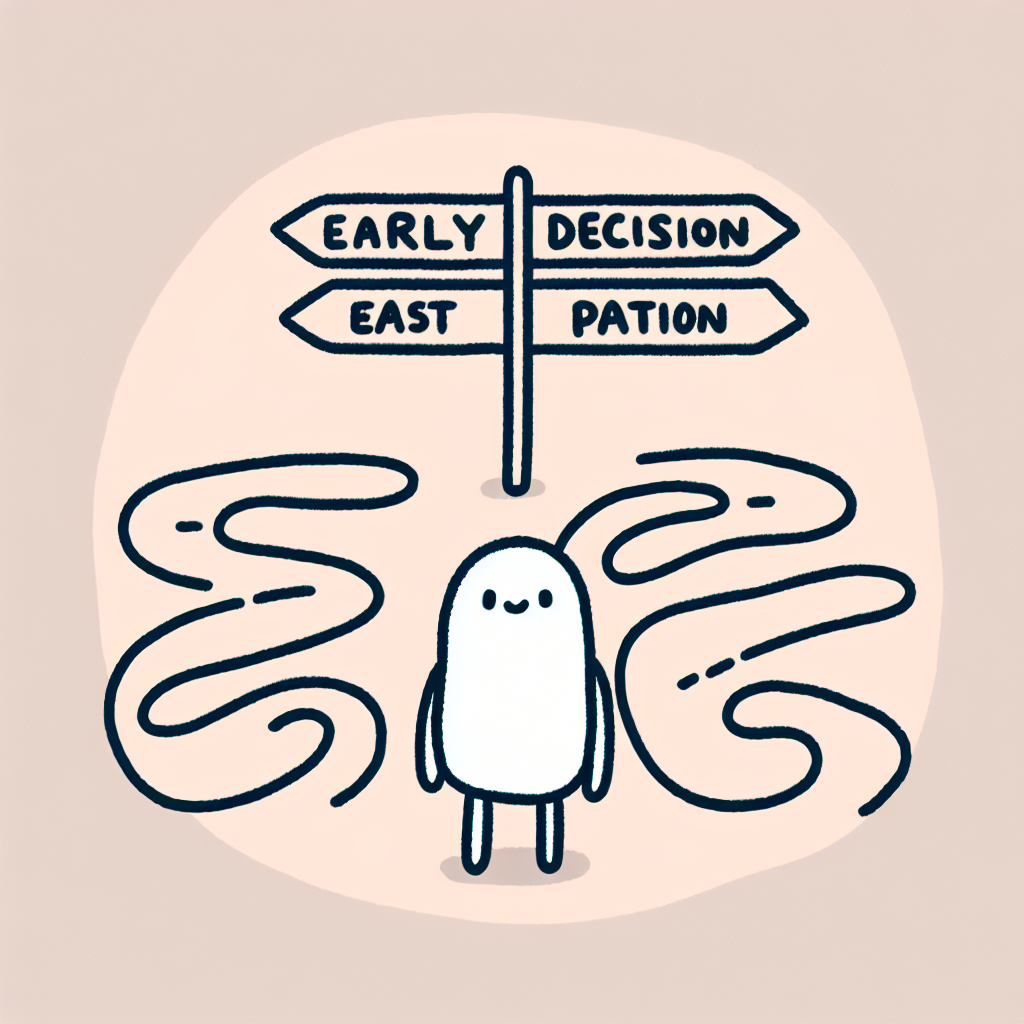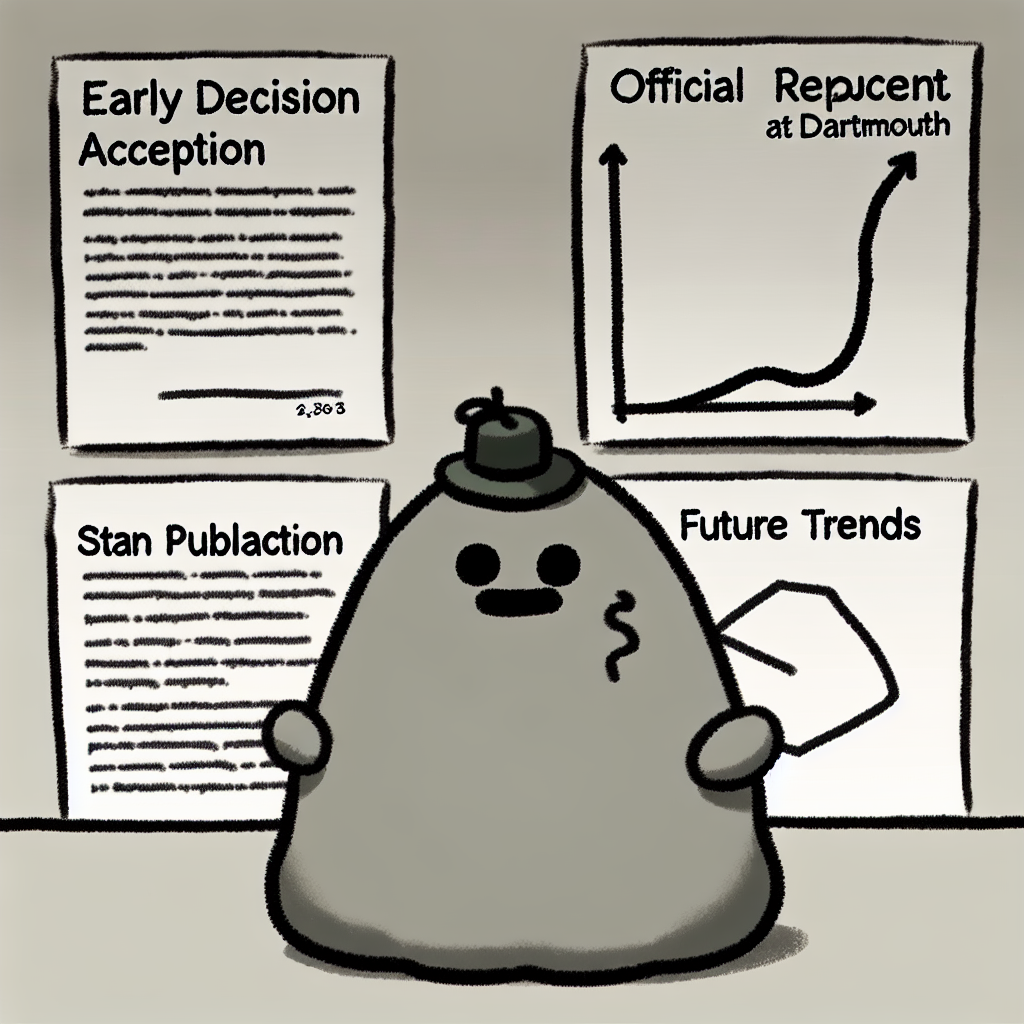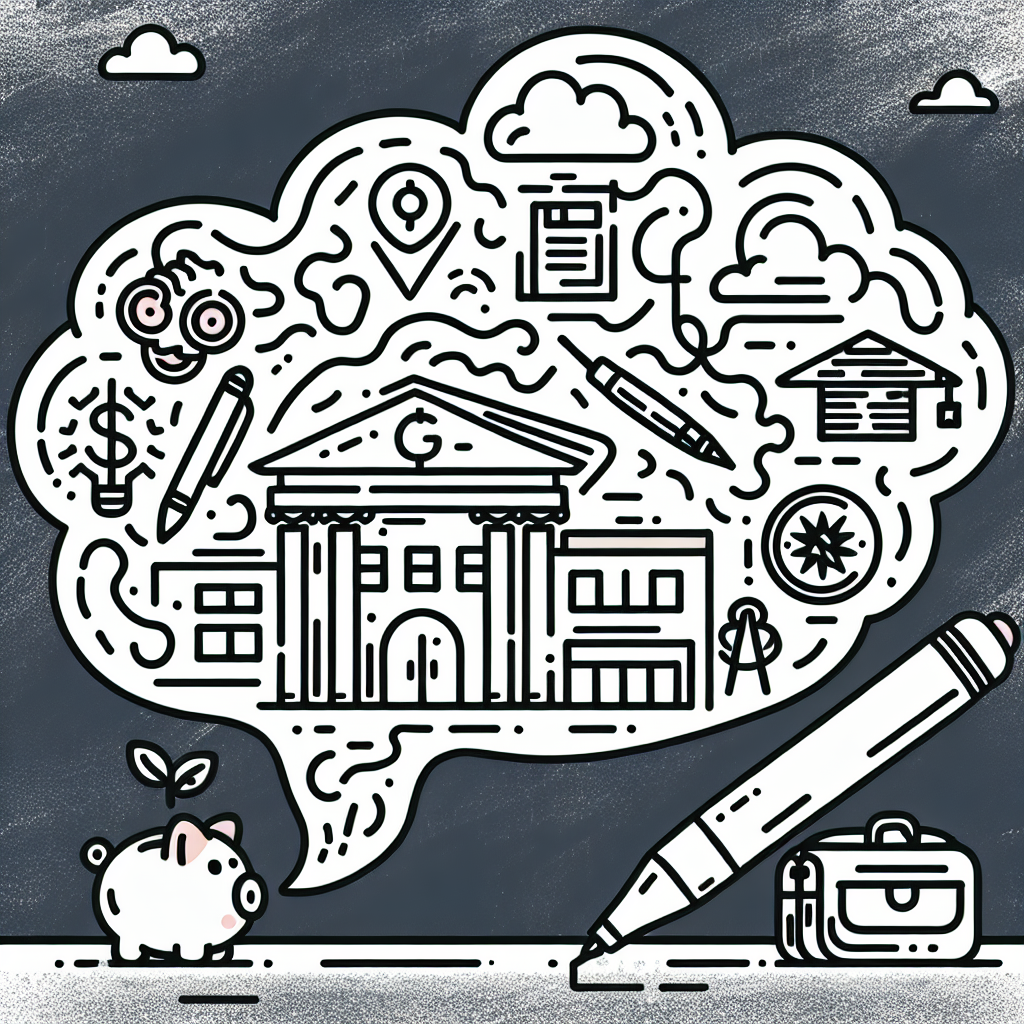Introduction
Dartmouth College, a member of the Ivy League, is known for its academic rigor, selective admissions, and historic campus in Hanover, New Hampshire. As one of the most prestigious institutions in the United States, Dartmouth consistently attracts top-tier applicants from around the world.
One pathway applicants can use to apply is Early Decision (ED), a binding admissions process that requires students to commit to attending Dartmouth if accepted. Unlike Regular Decision, ED applicants receive their admissions decisions earlier and are evaluated in a smaller pool, which can impact their chances of admission.
Understanding the Dartmouth early decision acceptance rate is crucial for prospective applicants. It provides insight into the competitiveness of the ED round and helps students make informed choices about their application strategy. Applicants who are certain that Dartmouth is their top choice may benefit from applying ED, but it’s important to weigh the advantages and implications carefully.

Early Decision at Dartmouth: A Strategic Overview
What is Early Decision?
Applying Early Decision (ED) to Dartmouth means making a binding commitment to attend if admitted. Unlike Regular Decision, where students can compare offers from multiple schools, Early Decision requires applicants to withdraw all other applications upon acceptance. This commitment is significant and should only be made if Dartmouth is a student’s unequivocal first choice.
The Early Decision timeline typically includes a November 1 application deadline, with admissions decisions released in mid-December. This earlier schedule allows students to secure a college spot well before the traditional spring timeline.
Historically, applicants who apply Early Decision to Dartmouth benefit from a higher acceptance rate compared to those applying Regular Decision. This advantage is partly due to the demonstrated interest a binding application shows and Dartmouth’s desire to admit students who are fully committed to attending.
Why Students Apply Early to Dartmouth
Many students choose the Early Decision route to Dartmouth to improve their chances of admission. The Dartmouth early decision acceptance rate consistently exceeds that of the regular pool, making it an appealing option for competitive applicants.
Applying Early Decision signals a strong commitment to Dartmouth, which the admissions committee values. This demonstrated interest can positively influence an applicant’s chances.
Additionally, Dartmouth meets 100% of demonstrated financial need for all admitted students, including Early Decision applicants. This means that committing early does not preclude access to substantial financial aid packages, making ED a viable choice even for students who require financial assistance.

Application and Acceptance Trends Over Time
Record-Breaking Applications
Dartmouth has witnessed a steady increase in early decision (ED) applications in recent years, a trend that underscores its growing appeal and competitiveness. For the Class of 2028, the college received 3,550 ED applications—the highest in its history (Source). This record-setting figure was matched by the Class of 2029, which saw application volume remain at the same unprecedented level (Source).
Acceptance Rates: A Comparative Look
Despite increasing application numbers, the Dartmouth early decision acceptance rate has been on a downward trend, reflecting heightened selectivity. The Class of 2028 had an ED acceptance rate of 17%, with 606 students admitted (Source). This marked a decline from the 19% ED acceptance rate for the Class of 2027, reinforcing the pattern of rising competition. Over the long term, Dartmouth’s ED acceptance rate has gradually decreased, which suggests an increasingly selective admissions process.
Overall Admissions Context
In contrast to the ED acceptance rate, Dartmouth’s overall acceptance rate for the Class of 2028 was just 5.3% (Source). The significantly higher Dartmouth early decision acceptance rate compared to the overall rate highlights the strategic advantage of applying ED (Source).

Analyzing the Data: What Does This Mean for Applicants?
Increased Selectivity
The Dartmouth early decision acceptance rate reflects a broader trend of increased selectivity in elite college admissions. As Dartmouth receives a growing number of early decision (ED) applications each year, the number of available spots remains relatively constant. This results in a more competitive process, even in the early round. The college’s rising profile and strong brand appeal contribute to this surge in interest, drawing applicants who are eager to commit early.
Furthermore, the binding nature of ED gives colleges like Dartmouth a strategic advantage. By admitting a portion of their class through ED, institutions can better manage yield and enroll students who are likely to attend. This helps stabilize class sizes and planning, reinforcing the importance of the early decision round in the admissions strategy.
Strategic Advantages of Applying Early
Despite the increased competition, applying early can offer significant benefits. Historically, the Dartmouth early decision acceptance rate has been higher than that of the regular decision round. This means applicants may increase their chances of admission by applying early, provided they are well-prepared and meet the college's academic standards.
Securing a spot through ED also allows students to avoid the intense competition of the regular decision pool. Additionally, a binding early decision application signals strong interest in Dartmouth, which can be a favorable factor in the holistic admissions review process.
Potential Drawbacks to Consider
However, there are important trade-offs. One of the main concerns with applying early is the limited ability to compare financial aid offers. Since ED is binding, students must commit without seeing packages from other schools, which can be a disadvantage for those prioritizing cost.
Applicants may also feel pressured to make a decision before fully exploring all college options. This can lead to rushed choices or missed opportunities. Moreover, meeting the earlier application deadline requires careful planning and preparation, which can be challenging for some students.
In summary, while the Dartmouth early decision acceptance rate may suggest a strategic opportunity, applicants must weigh the benefits against the limitations to determine if it aligns with their academic and financial goals.

Class Composition and Early Decision Impact
ED's Role in Shaping the Incoming Class
Early Decision (ED) plays a central role in shaping Dartmouth's freshman class. A substantial portion of admitted students each year come from the ED pool. For the Class of 2028, Dartmouth reported a record number of applicants, with a significant share accepted through ED, highlighting its importance in enrollment planning Source.
The Dartmouth early decision acceptance rate often reflects strategic institutional priorities. ED allows the college to manage yield more effectively by securing commitments from admitted students early in the process. It also provides a mechanism to support admissions goals such as increasing the number of legacy students, recruited athletes, and applicants from diverse backgrounds. This strategic use of ED helps Dartmouth maintain a balanced and mission-aligned incoming class.
Financial Aid and ED Admissions
Dartmouth maintains a policy of meeting 100% of demonstrated financial need for all admitted students, including those admitted through Early Decision. While some prospective students express concern that applying ED might limit their ability to compare financial aid offers, Dartmouth’s need-blind admissions process and full-need financial aid policy aim to mitigate this issue.
The financial aid process for ED applicants is the same as for regular decision, with aid packages based on the same formula and institutional commitment. However, because ED is binding, students must be comfortable accepting the financial aid offer provided. Dartmouth encourages ED applicants to use its Net Price Calculator to estimate aid in advance, reinforcing its commitment to equitable access regardless of when a student applies. The Dartmouth early decision acceptance rate, therefore, includes students from a wide range of socioeconomic backgrounds supported by robust financial aid.

Looking Ahead: Predictions and Considerations for Future Applicants
What to Expect in Coming Years
The Dartmouth early decision acceptance rate has seen a downward trend as application numbers continue to rise. This pattern is expected to persist in the coming years, with more students applying through the early decision (ED) round to improve their chances. As competition intensifies, the early decision pool is likely to become increasingly selective, potentially driving the acceptance rate even lower.
This trend reflects a broader national pattern among selective colleges, where early decision has become a popular strategy for applicants. Dartmouth’s ED round offers a binding commitment, which allows the admissions office to predict yield more accurately. As such, the college may continue to prioritize students who apply ED, especially those who demonstrate a strong likelihood of enrolling.
How to Maximize Chances in ED Round
To improve their odds in a competitive early decision cycle, applicants should focus on presenting a strong academic profile. This includes high grades in rigorous coursework and competitive standardized test scores, if submitted. Given the selective nature of the Dartmouth early decision acceptance rate, these elements are critical.
Equally important are well-crafted personal essays and thoughtful letters of recommendation. These materials should highlight the applicant’s unique qualities and convey a clear connection to Dartmouth’s mission and campus culture. Demonstrating a strong fit with Dartmouth—both academically and personally—can significantly strengthen an application.
Ultimately, while applying early decision can offer a strategic advantage, success depends on the overall strength and coherence of the application within the context of Dartmouth’s increasingly selective admissions landscape.

Conclusion
The Dartmouth early decision acceptance rate continues to reflect a strategic advantage for applicants who are confident in their commitment to the school. Historically, students applying through early decision (ED) have enjoyed higher acceptance rates compared to regular decision applicants, making ED an appealing path for those who consider Dartmouth their top choice.
However, the process has become increasingly selective. As more students recognize the benefits of applying ED, the pool has grown more competitive. This means that while the acceptance rate may still be higher than in regular decision, securing admission through ED is far from guaranteed.
For students considering Dartmouth's early decision option, it is essential to prepare thoroughly. Applicants should ensure that Dartmouth is their unequivocal first choice, as ED is a binding commitment. They should also present a strong academic and extracurricular profile by the early deadline, as there is less opportunity to improve their application later in the school year.
Ultimately, thoughtful planning and informed decision-making are key. Students should weigh their readiness, fit with Dartmouth, and the implications of a binding admission before applying early decision. While the Dartmouth early decision acceptance rate may offer an edge, success depends on a well-prepared and genuine application.

Additional Resources
For those looking to explore more detailed data and analysis related to the Dartmouth early decision acceptance rate, the following sources provide valuable insights:
- Dartmouth News – Class of 2028 ED Report: Official report detailing the number of early decision applicants and admits for the Class of 2028.
- The Dartmouth – ED Acceptance Rate Analysis: Student-run newspaper article analyzing the record-low 17% Dartmouth early decision acceptance rate for the Class of 2028.
- Dartmouth News – Class of 2029 ED Applications: Preview of early decision application trends for the Class of 2029, showing continued competitiveness in the Dartmouth early decision acceptance rate.
- Student Affairs at Dartmouth – Admissions Overview: Overview of application statistics and trends for the Class of 2028 from the Division of Student Affairs.
- U.S. News & World Report – Dartmouth Admissions Stats: General admissions statistics including early decision data, offering broader context for the Dartmouth early decision acceptance rate.














